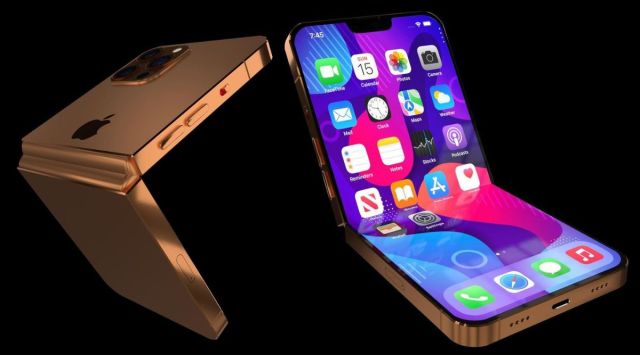The number of phones Apple launches every year may have risen from one to three to cater to the needs of a wider audience, but there’s still a missing gap in the lineup as far as foldables are concerned. None of the current iPhones fold in half.
That’s not to say that the Cupertino-based company has been sitting still, though. 2020 and 2021 saw several patents that suggested Apple is indeed actively working on a foldable phone/tablet. While things have grown quiet more recently, a fresh patent emerged this week describing technology that would allow users to operate a phone using its chassis (besides through the display).

Below we take a look at this particular patent and similar ones filed over the years, suggesting what’s cooking at Apple HQ with regard to its upcoming foldable.
A button-less foldable iPhone
As reported by CNBC, a patent awarded to Apple on February 14 describes technology that would allow users to touch multiple parts of a device besides the screen to carry out functions.
A “virtual shutter button” is elucidated in the patent, using which a user could touch the side of a device to control the camera. A user could also slide their finger upwards and downwards on the side of the device to control the volume.
The patent also includes the drawing of a foldable phone or tablet with a wraparound screen. While the release date for such a device is anyone’s best guess, rumours have put it at a very tentative 2025.
Apple’s maiden foldable phone patent
Apple’s earliest patent that got the ball rolling was one from 2016, describing an iPhone with a foldable full-screen display. For perspective, the very first mainstream phone with a foldable screen — Samsung’s Galaxy Fold — landed in February 2019.
Story continues below this ad
The patent, which was first spotted by Apple Insider, suggested the use of a number of flexible component aside from the display, including a metal support structure. Both halves of the display remain accessible when the phone is shut.
Movable flaps to prevent display crease when folded
In February 2020, Apple was granted a patent for a foldable device with a unique hinge mechanism that made use of movable flaps to prevent the display from being damaged or creased when folded. When the device is unfolded, the movable flaps would extend to cover the gap, then retract as the device is folded.
It’s unclear if such a design remains relevant in 2023 when companies like Huawei and Oppo have launched foldables with elaborate “teardrop” hinges to minimise creasing and display gap, while also enhancing durability.
Multiple devices coming together to turn into a single unit
Another patent spotted by AppleInsider that was granted to Apple in March 2020 visualises a ‘foldable’ device but without a hinge at all. Published by the US Patent and Trademark Office under the title “System with multiple electronic devices,” the patent describes a technology that allows two or more devices to act as one through the use of proximity sensors when brought close to each other.
Story continues below this ad
The patent also suggests that when these devices are placed together their displays would turn into a single unit.
“Magnetic components may hold devices together in a variety of orientations. The magnetic components may operate in cooperation with beveled housing edges and other structures to help hold devices in planar configurations in which the devices lie in a common plane and non-planar configurations in which the devices are oriented at a non-zero angle with respect to each other,” reads an excerpt from the patent.
Hardcoat layer to prevent cracking on foldable screens
A patent published in October 2020 named “Hybrid overlay/window structure for flexible display applications” (via Patently Apple) revealed how Apple could use a protective hardcoat layer to prevent cracking on its curved, flexible, or foldable display modules. This layer could also improve scratch resistance and durability.
The patent notes that “typically, glass fracture initiates from the presence of micro-cracks.” Apple’s hardcoat layer would fill pre-existing micro-cracks, making it harder for serious cracks to develop.









